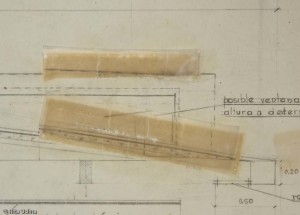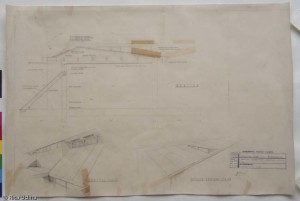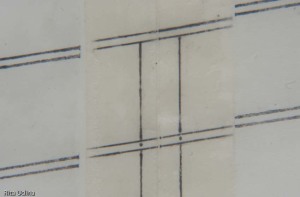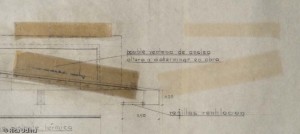This document will self-destruct in 30 secs!
Or how to remove pressure sensitive tapes, without removing them
We have spoken about bibliopaths, about misuses and how to eradicate its effects… But, what happens when the artefact itself causes its own degradation?
It’s not a spy movie’s myth: many documents self-destruct, such as iron-gall ink manuscripts (s.IX-XIX). But caducity is not only an old materials issue, it is -in contrast- very common in contemporary works. On the one hand due to miraculous products of questionable efficacy, and secondly because Art is no longer composed of a material elite. Anything goes today: recycled products, plastics of unknown durability…
Lets focus now on the restoration of the matter, and leave to metaphysicists the valuation of these art revelations so peculiarly materialized. We already have the difficulty to establish an intervention criteria, plus the inconvenience of premature expiry of its components; and they both will contribute to make the restoration of these media quite complex.
The criterion, to what extent a restoration takes place, is especially committed when the author of the work didn’t intended it to last. Is it then permissible to try to stop the effect of time? With all due respect for their creators, it might be more convenient that they were deceased, so there will be less people to give an opinion!


The above examples never intended to last. They are transient studies of a definitive (and more stable) work, which we strive on preserving in order to have a snapshot of its creative process. You might think I have prosecution issues: they are all covered with sellotape!
The problem in both drawings was that the sensitive tape belonged to the original document even before it was finished. The ink is on top of the polypropilene tape, and not on the tracing paper. Must we leave the fatty adhesive to keep on damaging the document? Must we remove it?


After long deliberations, this is what was done:
- Remove the scotch tape.
- Remove the fatty remnants from the subjacent paper, and also from the plastic strip (called backing or carrier).
- Paste again the “cleaned” scotch tape strip, using a non-fatty synthetic adhesive.


This way we preserve the looks and intention of the original work, but we have eradicated the damaging agent.
But there’s an issue I could not solve, however much I pondered about it, and is the fact that in one of them the plastic strip was shrank, deforming with it the drawing lines, which remained discontinued. Several solutions were possible, none of them completely satisfactory.




Finally I chose to relocate the sensitive tape into a position where fewer lines remained interrupted. I invite you to suggest other solutions… and give your opinion!
Aknowledgement:
Historical Archive of the Association of Architects of Catalonia (CoAC); owner of all the plans above mentioned and who trusted me for their restoration. Many thanks!

